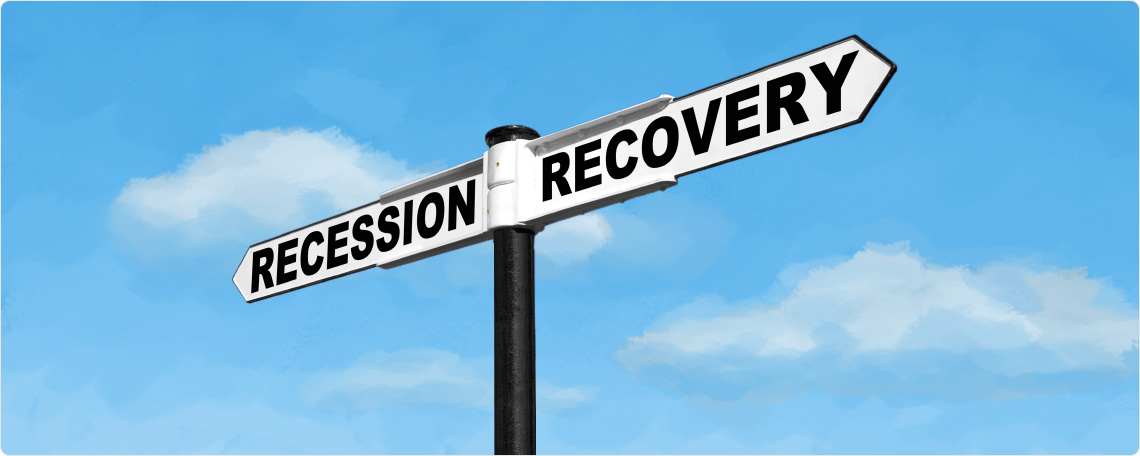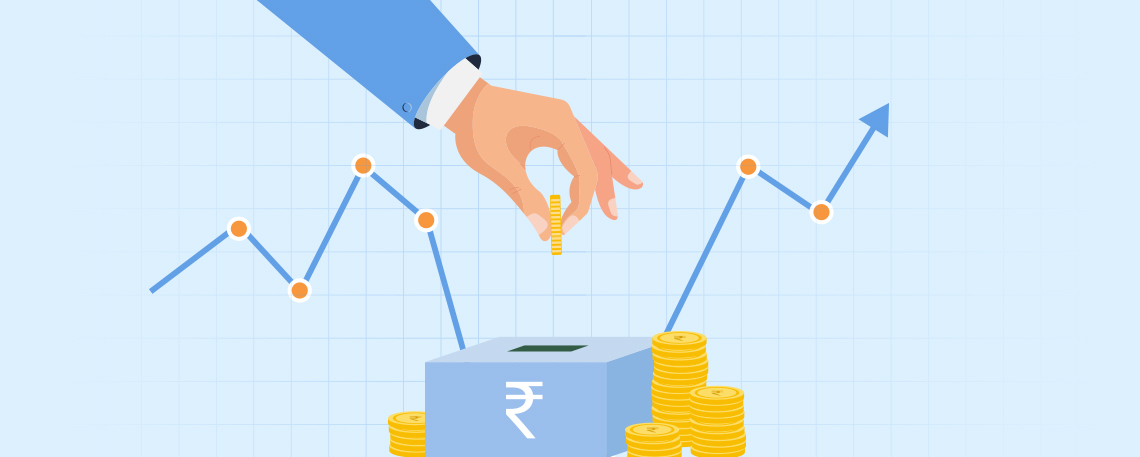StockAxis Market Intelligence (Commentary for August 2019; Outlook for September 2019)
September 07, 2019
|
We are pleased to present to you our monthly market commentary and outlook for the forthcoming month. The ‘StockAxis’ Market Intelligence’ is a quick update on the markets for the month gone by and our view for the next month. Use our sharp and crisp synopsis to continue building your wealth!
Global Trends
- S&P Ratings indicates that India will outperform most countries in the region and is in ‘good shape’ to overcome global headwinds. Projects 7-7.5% growth.
- Gartner AI Business Value Forecast indicates Artificial Intelligence augmentation will create USD 2.9 trillion of business value in 2021 and surpass all other AI initiatives by 2030.
- India’s holding of US government securities rose to USD 162.7 billion at the end of June 19, a rise of USD 6 billion according to US Treasury Department data.
- 5G network infrastructure revenue will double to USD 4.2 billion between 2019 and 2020 according to Gartner. 5G services to begin in major cities in 2019-20.
- Frost and Sullivan report shows mobile biometrics market to expand with the biggest segment being fingerprints. Biometrics market to expand to USD 21.19 billion by 2025 from present USD 5.39 billion.
- US-India Strategic and Partnership Forum praises Modi government initiative to allow 100% foreign investment in coal mining and contract manufacturing and easing sourcing norms for single-brand retailers among other reforms.
Domestic Trends
- Bengaluru dominates office absorption; ranks with 30% share, Hyderabad follows at 27% even as overall India office market absorption hits 22 million sq. feet in H1 2019.
- IHS Markit Services Purchasing Managers’ index rises to 1-year high of 53.8 in July 19 from 49.6 in June as services activity picks up steam.
- Indian gaming industry picks up momentum presenting new employment opportunities for youth and women.
- Co-working operators venture into tier-2 cities as segment to attract over USD 1 billion in investments. Co-working segment has already doubled to 3.9 million sq. ft in 2018 compared to the previous year.
- Indian forex reserves touch life-time high of USD 430.57 billion, rise of USD 1.62 billion in the week to Aug 9, 2019 as foreign currency assets rise, according to RBI.
- Non-Life insurers earned premium income of Rs. 14,378.45 crore in July 2019, an increase of 23% from a year ago, says IRDAI.
- India’s fiscal strength reinforces the idea that the country can overcome poverty, according to Infosys co-founder NR Narayana Murthy. Advocates putting personal interests aside and working for national interests.
- Government panel on Direct Tax Code proposes radical changes to personal income tax rates and slabs; proposed to increase tax slabs from 4 to 5.
- Digital payment volumes to grow at 20% each year over the next four years thanks to ‘progressive’ thinking of RBI, central and state governments as well payment enterprises and industry associations, according to KPMG.
Market Trends
- SEBI makes simple registration criteria for Foreign Portfolio Investors, allows flexibility to mutual funds to invest in non-convertible debentures of unlisted entities. Central banks of foreign countries now eligible to register as FPIs.
- FIIs recorded a net outflow of Rs. 14,828.76 crore in August 2019 against a net outflow of Rs. 16,870.13 crore in July 2019.
- The Nifty closed at 11023.30 on 30th August 2019 against 11085.40 on 30th July 2019, having fallen by 62.1 points over the previous month.
- The Nifty 50 P/E ratio was at 27.27 at end-August 2019 against 27.34 at end-July 2019. The average P/E ratio for the past 12 months is 27.26.
Highlights
- The Good: Favourable monsoons, Government’s focus on reviving economic growth, Rupee depreciation to help exports
- The Bad: Economic slowdown, lack of growth triggers in Budget 2019, Escalation of US China trade wars
StockAxis’ Outlook for September 2019
Sugar sector – positive going forward
The sugar sector has been in the news thanks to changes that are taking place due to both government as well as industry initiatives.
Increasing use of ethanol
Use of Ethanol, a by-product of sugar manufacture, will be increased by 10% and 20% by 2020 and 2030 respectively in petrol and diesel in order to lower prices of petrol and diesel. This process will reduce cost of energy in the country. This initiative has led to most sugar companies expanding their ethanol manufacturing capacity. The government has also approved soft loans of Rs. 12,900 crore with interest discount of 5% for 114 sugar related projects, which would allow for building capacity of 200 crore litres of ethanol by 2023. These new measures are part of the government’s efforts to overcome the cyclical vagaries in the sugar sector and initiate a phase of sustainable earnings for the sector.
Minimum Selling Price
Data from the Indian Sugar Mills Association indicates that by September 2019, the inventory of sugar in India would touch 14.62 million tonnes. Estimated sugar production in the country was 32.90 million tonnes in the previous two years and the current scenario is one of plenty. This glut has led to reduction in sugarcane growing areas. However, raising the Minimum Selling Price (MSP) of sugar by 7% has helped the industry avoid losses.
Import duty hike
In order to avoid dumping of sugar into the country by other sugar producing nations, the government has hiked import duty on sugar to 100%.
Waiving export levies
Simultaneously, the government has waived off export duty of 20% on sugar to make Indian sugar more competitive in the global markets. Export of 2 million tonnes of sugar has been made mandatory for the millers.
In August 2019, the government announced a Rs. 6,268 crore subsidy for export of 6 million tonnes of sugar for 2019-20 marketing year starting from October 19, which would further help mills who face a cash crunch.
The combination of import duty levies and export sops will help India gain a foothold in the global sugar trade.
Clearing farmers’ dues
The government increased its purchase of sugar by 17% to 2.1 MT in May 2019 in the hope that this would help mills clear farmer dues even though sugar prices have been weak at near Rs. 31,000/tonnes level. Additionally, production assistance will be given to sugar producers and soft loans Rs. 10,540 crore to clear farmers’ dues.
Outlook
The sector which has been mostly overcome by glut can look forward to better times in the season spanning 2019-20 as areas under sugarcane production fall.
Sugar companies have shown strong earnings in FY 19 and cash flow, which has always been a weak spot for these companies, would likely improve due to the government and industry measures in both FY 20 and FY 21. Book values of sugar companies are likely to rise 30-60% in the coming two years. Structural changes are on the way in the sugar sector, which have improved fundamentals.
Thanks to a rise in the ethanol manufacturing capacity of large sugar mills and the resulting strong cash flows in the coming 2-3 years, producers would be able to deleverage their balance sheets. Further, the sugar producers would be able to use improved cash flow positions to build even larger capacities resulting in a situation of cascading returns.
The rise in the demand for ethanol would free the sector from dependence on the government and would allow the millers to shift from sugar to ethanol, and vice versa depending on the prevailing conditions. It would result in the emergence of a system where the balance of sugar inventory can always be maintained in the system and sugar prices would not enter a freefall due to glut. These new policies are most likely to benefit larger and more integrated mills thanks to the economies of scale that they enjoy.
The Indian sugar industry is one of the largest tax payers to the Indian exchequer. The industry has a significant role to play in future as it helps the country cut down its dependence on foreign oil by producing ethanol as a by-product which can be blended with petrol and diesel reducing their prices.
Globally oversupply of sugar has led to the prices falling and this has resulted in difficulties for Indian exports which have to compete against exports of countries such as Thailand and Australia, which have lower costs of production and pose strong competition. Yet, it can be said that the tide is turning for the Indian sugar sector and the coming few years will determine if the policies that have been taken by the government can prove effective in turning the sugar sector as an all-season favourite of investors.
We, at StockAxis, are constantly on the lookout for great businesses run by honest promoters that are available at the right price with sufficient margin of safety. Our stringent stock selection guidelines and clearly stipulated entry and exit points make equity investing a ‘rich’ experience for our investors!




